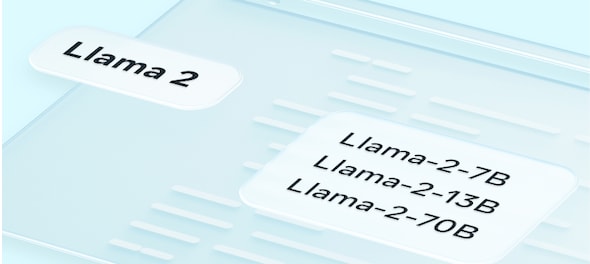
Weeks after launching Twitter rival Threads, Facebook parent company Meta is here with an artificial intelligence system Llama 2 — that will compete with the likes of OpenAI’s ChatGPT and Google's Bard.
Here’s everything you need to know about Llama 2
What is Llama 2?
Meta CEO Mark Zuckerberg said on July 18 that the company is partnering with Microsoft to introduce the next generation of its AI large language model and making the technology, known as Llama 2, free for research and commercial use.
Llama 2 is designed to enable developers and organizations to build generative AI-powered tools and experiences.
“We’ve been blown away by the huge demand for Llama 1 from researchers — with more than 100,000 requests for access to the large language model — and the amazing things they’ve achieved by building on top of it. We’re now ready to open source the next version of Llama 2 and are making it available free of charge for research and commercial use,” the firm said in a blog post.
What is new about Llama 2?
Llama 2 models are trained on two trillion tokens and have double the context length of Llama 1. Llama-2-chat models have additionally been trained on over one million new human annotations, the firm said.
Azure customers can fine-tune and deploy the 7B, 13B, and 70B-parameter Llama 2 models easily and more safely on the platform.
Meta’s research paper (cited by AP) introducing the new model reflects less openness than Meta has shown previously in its work to build models that require ingesting large troves of digitised writings such as books, news articles and social media feeds.
It says the latest model was trained on “a new mix of data from publicly available sources, which does not include data from Meta’s products or services,” but does not specify what data was used. It does say that Meta removed data from websites known to contain a “high volume of personal information about private individuals.”
Meta used the acronym LLaMA, for Large Language Model Meta AI, to describe the first version of its model, announced in February. It’s now dropped the capital letters for its second version, Llama 2.
Where can Llama 2 be accessed?
Llama 2 is available in the Azure AI model catalog, enabling developers using Microsoft Azure to build with it and leverage their cloud-native tools for content filtering and safety features.
It is also optimized to run locally on Windows, giving developers a seamless workflow as they bring generative AI experiences to customers across different platforms.
Llama 2 is available through Amazon Web Services (AWS), Hugging Face, and other providers too.
How is Llama 2 different from ChatGPT and Bard?
Llama 2 is free for research and commercial use. Neither ChatGPT nor similar offerings from Microsoft or Google are open source.
“Llama 2 outperforms other open source language models on many external benchmarks, including reasoning, coding, proficiency, and knowledge tests,” the firm says.
The first Llama was already competitive with models that power OpenAI’s ChatGPT and Google’s Bard chatbot, while the new Llama has been pretrained on 40 percent more data than its predecessor, with more than one million annotations by humans to fine-tune the quality of its outputs, Zuckerberg said.
Meta has also tried to distinguish itself by being more open than some of its Big Tech rivals about offering a peek at the data and code it uses to build AI systems. It has argued that such openness makes it easier for outside researchers to help identify and mitigate the bias and toxicity that AI systems pick up by ingesting how real people write and communicate.
“Open source drives innovation because it enables many more developers to build with new technology,” Zuckerberg said in a Facebook post Tuesday. “It also improves safety and security because when software is open, more people can scrutinize it to identify and fix potential issues. I believe it would unlock more progress if the ecosystem were more open, which is why we’re open sourcing Llama 2.”
Llama Impact Challenge
Meta in its blog said, it wants to activate the community of innovators who aspire to use Llama to solve hard problems. “We are launching a challenge to encourage a diverse set of public, non-profit, and for-profit entities to use Llama 2 to address environmental, education and other important challenges. The challenge rules will be available prior to the start of it.”
(With inputs from agencies)
Check out our in-depth Market Coverage, Business News & get real-time Stock Market Updates on CNBC-TV18. Also, Watch our channels CNBC-TV18, CNBC Awaaz and CNBC Bajar Live on-the-go!


Andhra Pradesh: Kuppam loyalty test for TDP chief Chandrababu Naidu
May 6, 2024 9:35 AM
PM Modi visits Ram Mandir for first time since 'Pran Pratishtha', offers prayers before roadshow
May 5, 2024 8:59 PM

